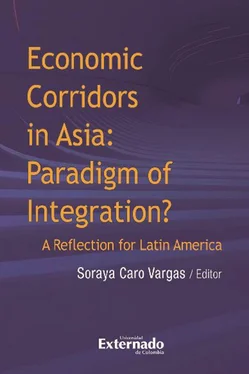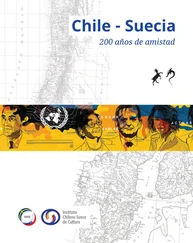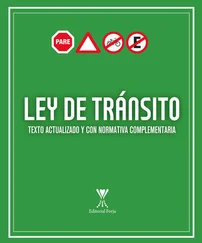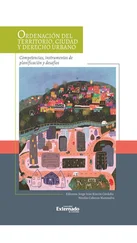JULIÁN ARÉVALO
Dean, School of Economics
Externado de Colombia University
SORAYA CARO VARGAS
1. THE HISTORY OF A MULTICULTURAL ACADEMIC ENDEAVOUR
For a decade now, the Rectorate of the Externado University of Colombia and the School of Finance, Government and International Relations (FIGRI), have given a fillip to the promotion and strengthening of ties between their students and teachers and the countries of Asia and Africa. Some expressions of this commitment are: the creation of the Centre of Contemporary Studies on India and South Asia (Cesicam) in 2013, groups of scholars engaged in the systematic study of countries like China and Japan and the recent establishment of the Centre of Turkish and Caucasian Studies, with the support of internationally recognized partners such as business experts, academics and diplomatic missions.
In order to forge links with networks of specialists, during 2017 and 2018, CESICAM approached universities and think tanks in Eurasia, such as the Technical University of the Middle East METU in Ankara, the Islamabad Institute of Strategic Studies, (ISSI) in Pakistan or Jindal Global University in India, which have all been active participants in the connectivity debates and on the implications of the China Belt and Road Initiative (BRI) . CESICAM scholars also attended international conferences which engaged with trends in connectographic studies like the one organized by the Leuven Center for Global Studies in August 2018, The Belt and Road Initiative and Global Governance (BRIGG ).
Since there was a paucity of comprehensive academic analyses on the evolution of the BRI project in Colombia, researchers from the Centre of Specialized Studies (CIPE) and CESICAM, located in Ankara, Bogota and Johannesburg, decided to design an interdisciplinary research project in March 2018, in which scholars from different areas would present their findings on the state of the art of BRI in their lands, as well on the existence of other transregional routes and modes of integration, in such a way that, those visions became a reference point to Latin American governments, that were already invited by President Xi Jinping to be part of the BRI. Researchers from Turkey, Kazakhstan, Pakistan, India, Paraguay, Argentina, Colombia, Brazil and Mexico participated in the initiative. This publication is an academic journey through a multicultural and multidisciplinary corridor; an experience of collaborative work and thematic construction by a non-formal group of researchers from different latitudes, who share their concern about the profound changes that the accelerated physical and technological connectivity in the world will signify for the study and exercise of international relations in the near future, and in the definition of the foreign policy of States.
2. THE SEARCH FOR SECURITY VS. GROWING UNCERTAINTY
Global production, information flows, the supply of basic resources, national security, the provision of services across borders, education, after sale services, the movement of people, telecommunications and freight transport are all linked to the networks of functional connectivity which provide the necessary physical and digital infrastructure for competitive connections between suppliers and consumers. Connectivity is a sine qua non in the dynamics of integration, internationalization and development. With this in mind, the present volume tries to find answers to two questions: What are the effects of these new routes on the national sovereignty and economic and social development of the people whose lives they crisscross and for the consolidation of a new regionalism and multipolar world? How will the economic corridors between Asia, Europe and Africa become reference points for Latin America in the immediate future?
The authors give us their vision on the different stages of the corridors in Asia and Africa. They offer recommendations on how to advance discussions on the socio-economic reach of the routes and they explain the delicate situations which must be handled for their existence or, they analyse the impact of the so called “connectography” (Khanna, 2014) in the design of national development policies in regional groups and global governance. The results fill a vacuum. Of course, Latin America has been a late arrival to the study of the implications for global connectivity and these new routes. The contributions of the researchers have become a relevant tool of analysis which fulfills a historical need and aims to provide scholarly inputs for governments, businessmen, communities and decision makers.
2.1. Methodology and Techniques
The implicit message to the researchers in our call for proposals was that their contributions dwell on the possible economic and social effects of the routes and economic corridors in their regions giving inputs and references to Latin American scholars. From the perspective of their specializations, they used deductive and analytic methods during their process of production of knowledge. ( Muñoz, 1998, pp. 192-193). They used primarily sources to analyse events such as the construction of the China-Pakistan Economic Corridor, (strategically the most important segment for China of the BRI initiative for the outlet it gives to the Arabian Sea without touching Indian soil 1) or Narendra Modi’s, Sagarmala Project (which aims to unite the four cardinal points of India 2) and the study and compilation of secondary sources (reports, analysis statistics, government declarations, research articles etc.), devoted themselves to the task of describing historical movements, economic and social impacts, the important actors involved, their foreign policy interests and strategies, in order to later critically show the way in which the new kinds of connectivity and the failure or success of infrastructure megaprojects affect vectors such as South-South Cooperation, finance and debt mechanisms, internal growth, national security, the deepening of connectivity gaps or flow of information etc. Finally, the scholars gave recommendations or useful tips to the establishment in Latin America.
The economic corridors in Asia and Africa are realities that at times, seem to advance faster in comparison to rearguard or conservative theories. The BRI initiative has exponentially accelerated investment in megaprojects and their implementation, even though the objectives of these corridors change according to the needs of the proponent and the beneficiaries. Since the issues raised above are closely related to economic and social development through functional connectivity, the scholars clearly or implicitly use theories related to spatial development. The Development Axes Theory (DA) is a term coined by Pen Pottier (1963), and later used as an alternative theory of growth by writers such as Hilhorst (1972) Paelinck Nijkamp (1975), (1978), Richardson (1978), (2011) Heru Purboyo, Eko Budi Santoso and Dewi Sawitri (2012). In their essay, “The Development of Local Nodes along Transportation Corridors: A Review of Development Axes Theory”, they have tried to analyse whether the flow of goods and people along the axes is a determining factor for the increase of transport infrastructure which will connect the centres. The researchers of this book refer to them in their theoretical framework. 3
The terms Development Corridors or Economic Corridors, referred to in this publication have as their premise the territorial approaches outlined in the Spatial Development Initiatives (SDI), which have gained currency as development strategies in medium and emergent economies. The States design programs and investment frameworks in order to develop territories or unify regions and countries through routes with infrastructure as Healey (2004), mentions in his article “The Treatment of Space and Place in the New Strategic Spatial Planning in Europe”. Other spatial approaches have been developed by Whebell (1969), who discusses the importance of corridors in the metropolitan framework for the urbanization and population of spaces without elaborating on sub-urban areas. Brahmawong (2010)calls our attention to the negative effects of corridors such as the poor use of natural resources, the exclusion of certain communities or the effects on the quality of life of the inhabitants. He also lays emphasis on the importance of human capital on the routes, investment flows and entrepreneurial capacities. For the analysis of corridors from the so called financial geography, 4authors used the work of Rosa Luxemburg, the theoretical perspective of Hilferding (1914) and (1973), and Dimsky’s financial instability hypothesis (2017) to explain the internationalization of Chinese Banks and corporations during the last 20 years. As Alicia Girón states in her chapter, “It is necessary to rethink the categories of capital concentration and centralization and the importance of an economic bloc in order to understand why certain countries and not others grow in an equitable manner in the framework of the internationalization of capital”.
Читать дальше












